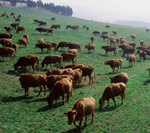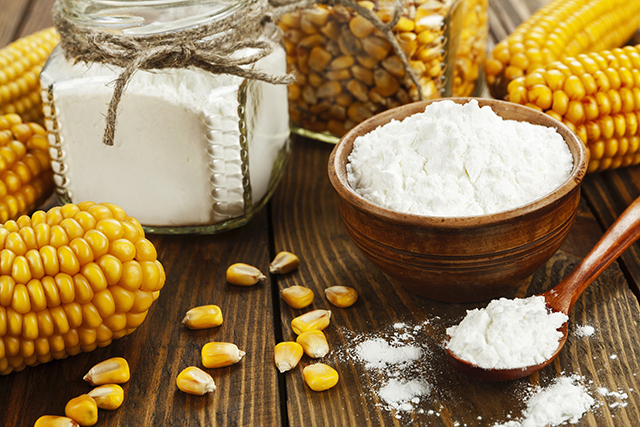The environmental benefits of grass-fed, pasture-rotated cattle
10/27/2015 / By homesteadingnews

Ever since the U.N. Food and Agriculture Organization blamed livestock for 18% of the world’s man-made greenhouse-gas emissions in a 2006 report, the globalists, always looking to use the environmental movement as a power-grabbing scheme, have used the report to further their war against eating meat. They play ‘good-cop’ against the giant factory-farming operations whose practices actually do harm to the environment and the health of consumers who eat their antibiotic and hormone laden fare – always posturing but never really doing anything of value. Meanwhile, the real solution remains largely ignored.
From the fossil fuels, fertilizers, pesticides, and farmland used to raise the GMO grain they consume to the bare, greenhouse-gas emitting feedlots on which they spend their last days, factory-farm raised cows actually do harm the environment. The solution, however, is not to stop eating meat or raising cows. Instead, it is to raise cows in an environmentally sustainable way, a way that is better for the environment than if there were no pastured cows at all.
Tragically, the land farmers depend on to grow our food is becoming increasingly devoid of nutrients, giving the food we eat a fraction of the nutritive value it once had. Every year, the US loses three billion tons of topsoil. According to the University of Wisconsin, land devoted to soy and corn production lost six times the topsoil of grazed pasture. Devoting more land to pasture grazing (and rotating that with growing crops) could mitigate this loss and even help create more topsoil.
Carbon sequestration: cows putting carbon where we need it the most
When cattle are rotated from pasture to pasture they eat a portion of the grass, spurring new growth which results in more net biomass. Cows then fertilize the land by trampling manure and decaying organic materials into the soil. The healthier plant roots retain more water and microbes, keeping carbon dioxide underground which, in turn, helps foster new plant growth. According to a twelve year USDA study of ways to improve soil quality, published in the Soil Science Society of America Journal (2010), moderately grazed areas actually have more stored carbon in the soil, both increasing fertility and slowing global warming.
Danish farmer Thomas Harttung keeps 150 head of cattle on his Aarstiderne farm. In an interview with Time (2010), Hartung said, “If you suspend a cow in the air with buckets of grain, then it’s a bad guy. But if you put it where it belongs – on grass – that cow becomes not just carbon-neutral but carbon-negative.” In the same story, Vermont farmer Abe Collins contends that growers could, with proper management, achieve a 2% increase in soil-carbon levels. According to Time, “Some researchers hypothesize that just a 1% increase (over, admittedly, vast acreages) could be enough to capture the total equivalent of the world’s greenhouse-gas emissions.”
Growing grass instead of grains also increases biodiversity because it offers habitats for the literally hundreds of animals that would otherwise not thrive in grain fields. The disappearance of grasslands, and consequently the biodiversity supported by those grasslands, is an environmental problem that can be mitigated by sustainable farming and pasturing methods.
There is no doubt that the average American consumes too much meat, especially of the conventional variety, but the right meats in moderation, though not for everyone, can be an important part of a healthy diet. If Americans switched en masse to pasture rotated, grass-fed beef, not only would it put the environmentally toxic factory farms out of business, but the naturally restored topsoil created by adding carbon and natural fertilizers to the land would increase the nutritive value of crops, resulting in better health for everyone.
Sources for this article include:
http://www.time.com/time/magazine/article/0,9171,1953692,00.html
http://www.eatwild.com/environment.html
http://www.ars.usda.gov/is/AR/archive/mar11/soil0311.htm
http://www.thecandidadiet.com/grass-fed-beef-candida-diet.htm
http://well.blogs.nytimes.com/2010/03/11/switching-to-grass-fed-beef/
http://www.organicgrassfedbeefinfo.com/environmental-benefits.html
http://www.naturalnews.com/035248_meat_consumption_nausea_pills.html
http://www.naturalnews.com/035798_grass-fed_beef_health_diet.html
About the author:
Scott and his wife, Kim, live in East Tennessee with their four small children, all of whom make excellent fodder for their blog A Morefield Life (connect with them on Facebook and Twitter), where they also write about marriage, parenting, nutrition & recipes, healthy lifestyle, homesteading, and many other topics. In addition to Natural News, Scott’s articles have appeared on WorldNetDaily, A Biblical Marriage, The Liberty Crier, Infowars, The Daily Sheeple, and many other websites.
Tagged Under:



















